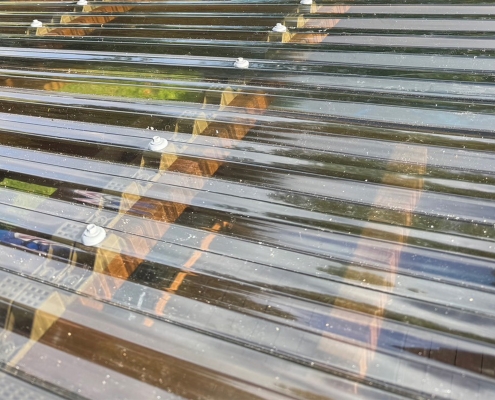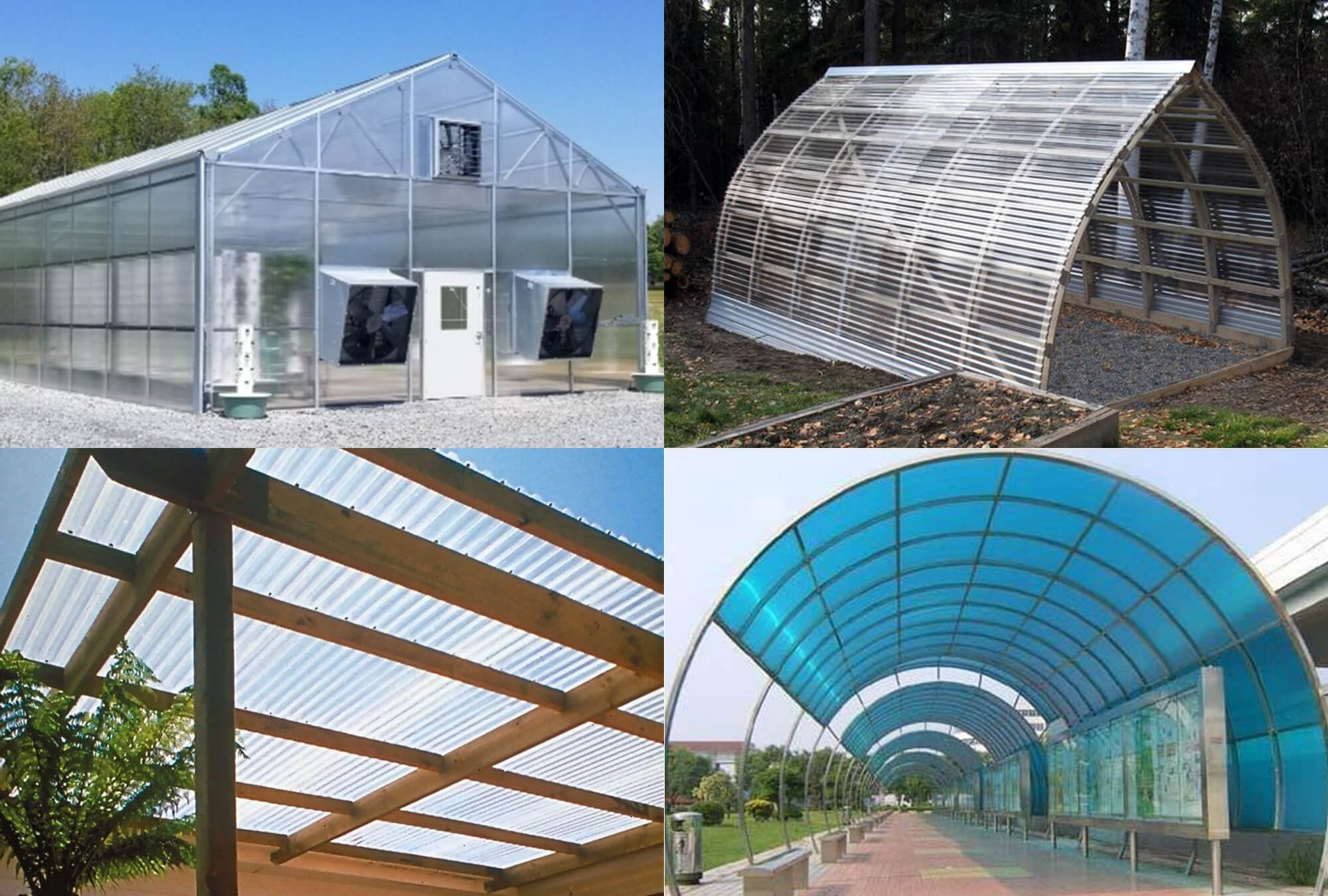Putting a Roof on a Pergola: 12 Benefits and Installation Process!
Thinking of enhancing your outdoor space? Putting a roof on a pergola can take your pergola’s functionality and aesthetics to the next level. This article highlights 12 key benefits, from weather protection to enhanced comfort, and provides a simple step-by-step installation guide to help you get started!
What is a Pergola?
Pergolas are generally known as a garden or outdoor structure which is made of vertical posts supporting a grid of cross-beams and rafters, normally uncovered. Like canopies, pergolas can be either a free-standing structure or attached to the property, which creates an additional covered outdoor space that can be used as a shaded walkway, hang plants, seating area to relax and entertain guests, or provide shelter over hot tubs or fire pits.
When considering putting a roof on a pergola, it’s important to understand that a pergola without a roof allows extra exposure to nature and maintains an open-air feel to the covered space, which is what most users seek when it was built. However, adding a roof to a pergola can enhance both the functionality and aesthetics to this already practical outdoor structure.
12 Benefits of Putting a Roof on a Pergola
When considering putting a roof on a pergola, there are numerous benefits that can enhance your outdoor living experience. Here are 12 key advantages to help you make an informed decision.
1. Weather Protection:
One of the primary reasons for putting a roof on a pergola is to shield from rain, snow and and most elements, allowing outdoor enjoyment even in wet conditions, as it creates a dry and comfortable outer space.
2. Sun Protection:
Provides shade, reducing UV exposure and creating a cooler space beneath.
3. Extended Outdoor Use:
Extends the usable outdoor area, making it more enjoyable during hot summer days and light rain.
4. Improved Comfort:
Reduces glare and heat, making it more comfortable for lounging, dining, or working outside.
5. Furniture Protection:
Protects outdoor furniture from rain, sun damage, and fading.
6. Energy Efficiency:
Reduces heat absorption into adjacent windows and walls, lowering indoor cooling costs.
7. Enhanced Aesthetics:
Adds a finished look to your pergola, increasing curb appeal and value.
8. Increased Privacy:
Roof materials such as colored or shaded polycarbonate, can add an extra layer of privacy from neighboring houses.
9. Wind Protection:
A solid roof helps shield the area from gusty winds while allowing some airflow.
10. Customizable Lighting:
Putting a roof on a pergola allows installation of outdoor lighting, such as string lights or chandeliers, enhancing nighttime usability.
11. Versatility:
A roofed pergola can be adapted for different uses, for example, outdoor activities such as dining al fresco or passive activities such as reading or board games will be less affected by wind and rain.
12. Seasonal Flexibility:
Covered pergolas will be usable year-round, especially if the roof is insulated or paired with side curtains for cold weather.
Step-by-Step Guide: Installing a Roof on Your Pergola
Putting a roof on a pergola not only enhances its functionality but also extends its lifespan. This step-by-step guide will walk you through the installation process, from selecting materials to sealing the edges, ensuring a sturdy and stylish pergola upgrade.
1. Local Building Codes
Local building codes may specify the type of materials permitted or requirements that have to be met before and after the construction. It may also specify the standards of which the building materials should comply with, which may affect the overall building cost.
2. Choosing a Roof Type
Choice of roof types include: solid (metal, wood, shingles), transparent (polycarbonate panels, glass), retractable (fabric or canvas), or lattice roofs. The choice depends on the desired level of weather protection, light filtration, and aesthetics.
3. Measuring the Pergola
Take accurate measurements of the pergola’s dimensions (length, width, and height) to prepare sufficient material for the build. It is recommended to prepare slightly more material than anticipated as a buffer in case of unexpected mistakes.
4. Choosing the covering Materials
Choose the roof covering materials based on your climate, budget, and style preferences. Common options include:
- Polycarbonate Panels: Lightweight, durable, and UV-resistant.
- Glass Panels: Durable, very weathering resistant, and very long lasting.
- Metal Roofing: Durable, provides full weather protection.
- Wooden Roofing: Gives a classic and natural feel, but requires shorter maintenance intervals compared to other covering materials.
- Fabric Covers: Retractable or fixed fabric options for partial coverage.
5. Preparing the Pergola
The pergola’s structure must be designed to support the covering material chosen. Naturally, full metal roofing sheets or glass panels will require a significantly stronger structure compared to polycarbonate panels or canvas covers. Reinforce the structure if necessary by adding extra support beams or bracing.
6. Install Support Beams (If Needed)
As previously mentioned, for heavier roofing materials such as metal roofing sheets and glass panels, you may need to install additional beams or rafters to provide proper support and minimize sag. Be advised that in high wind or high snow load areas, extra support is also required.
- Purlins run perpendicular to the rafters and provide added support for the covering materials.
- Attach rafters to the pergola’s beams, ensuring proper spacing and slope for drainage.
(Read more:Wind Resistance Greenhouses: Guidelines for High Wind Areas!)
7. Attach Flashing
Install flashing where the pergola meets the house to prevent water from seeping into the joint. This step is crucial for attached pergolas.
8. Install Roofing Panels or Cover
Depending on your choice of material, install panels or cover:
- Polycarbonate Panels: Lay the panels over the frame and secure them with screws or clips, ensuring the edges overlap for waterproofing.
- Metal Sheets or Shingles: Nail or screw metal sheets or shingles in place, ensuring they align and overlap properly to prevent leaks.
(Read more: Where to Place Screws on Metal Roofing? 3 Screw Positions)
- Fabric: If using a fabric cover, install the track system (for retractable covers) or stretch the fabric tightly across the beams and secure it.
9. Secure Fasteners
- Use appropriate fasteners (screws, nails, or clips) to secure the roofing material to the pergola frame. Ensure everything is tightened and aligned for maximum durability.
- For material such as polycarbonate or other plastic roofing sheets, thermal expansion holes as well as dedicated fixings might be required. BDN Fasteners offer a variety of custom fixings such as Poly-Fast™ and PolyXpand™ skylight fixing fasteners that will fit the purpose.
10. Seal the Edges
Use weatherproofing sealant around the edges of the roof, especially around any openings, joints, or where the pergola meets the house, to prevent water leakage.
(Read more: Skylight Leaks When It Rains? Causes and Solutions for Sealing!)
11. Install Drainage
For solid roofs, consider adding gutters or a drainage system to direct rainwater away from the structure.
12. Finish and Customize
Paint, stain, or treat the roof and pergola as needed for added protection and aesthetic appeal. You can also add lighting, curtains, or climbing plants for a more inviting look.
Enhance Your Pergola with a Roof: Functionality, Style, and Reliable Solutions
By adding a roof to your pergola, you transform it into a multi-functional outdoor space, perfect for year-round use. Whether for relaxation, dining, or entertaining, the roof provides essential weather protection and aesthetic value. It is also recommended to hire a professional contractor if unsure about the type of material to use or unfamiliar with the installation process. For high-quality roofing fasteners and solutions, visit BDN’s Fasteners to explore products like Poly-Fast™ and PolyXpand™ that ensure durability and a perfect finish.








